Looking for some help with Zendesk time tracking?
If you’re looking to deliver exceptional customer service and improve your brand image, Zendesk is definitely the tool for you.
Zendesk is a powerful customer support management software that combines powerful tools to help you build an all-in-one solution for your customers. Whether it’s a knowledge base, self-service portal or online community page, Zendesk has you covered.
However, that isn’t all they offer.
One of their most interesting features is their built-in time tracking capability that helps your team manage their time better. In this article, we’ll help you understand Zendesk time tracking and learn how to use it.
But since Zendesk is such a powerful tool, and there are so many other features too, we’re going to highlight 6 other great features you can use in addition to time tracking.
In this article we’ll cover:
(click on the links to jump to a section)
The top 6 other Zendesk features you should definitely try out
- Live chat
- Social messaging
- Self-support portal
- Customer relationship management
- Analytics
- IT help desk
What is Zendesk?
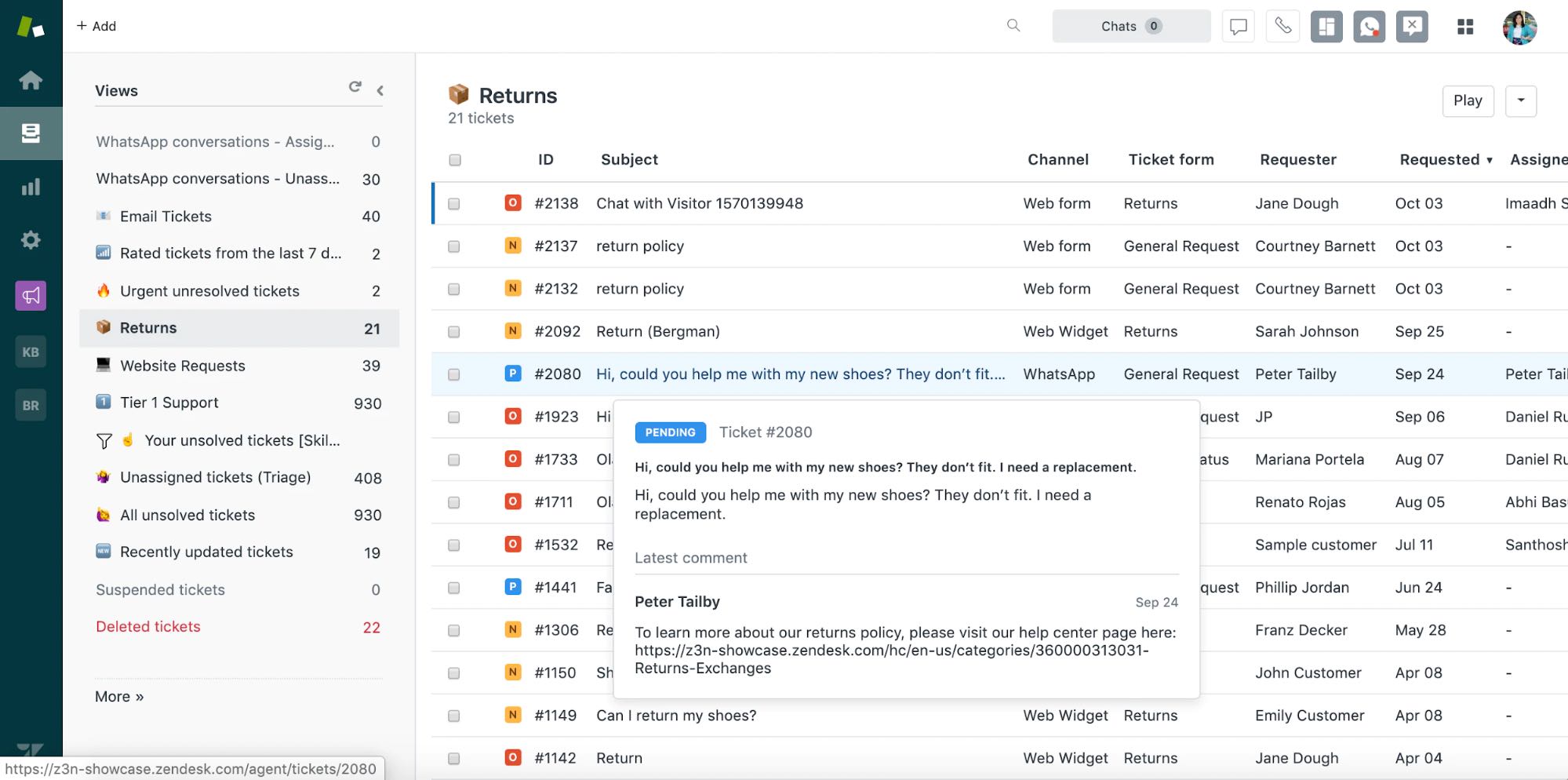
Zendesk is a help desk software that helps you provide high-quality customer support at any time and from anywhere. As it’s an all-in-one solution, the software has different support apps that you can use based on your needs.
Some of these apps are:
- Self-support portal: where your customers can find answers to the most common questions and easy-to-fix problems.
- Knowledge base: all the information you’ve collected over your company and products is neatly organized into easy-to-read articles, FAQs and other useful content.
- Live chat: a pop up chat box that appears on your website in case your customers want to ask you a question or need your help.
- Ticketing system: organize and manage all customer requests from one place.
- Social messaging: reach out to your customers on their favorite social media platforms.
Now let’s get a closer look into the key Zendesk features you really need to look at:
Zendesk time tracking
You can’t really understand how efficient your customer support system is until you get information on:
- how much time your agents spend on solving tickets
- which tickets cause delays
- your average ticket time
- your agent’s productivity
When you have this information, you’ll be able to work on improving your existing ticketing system and can find more efficient ways of providing excellent customer support.
To track time, you can use Tymeshift or the Zendesk time tracking app. Both of these are native Zendesk apps which can help you with managing your agents’ time more effectively.
However, as Tymeshift focuses more on workforce management overall, we’re going to focus on Zendesk’s time tracking app instead.
How does the Zendesk time tracking app work?
When an employee starts working on a ticket, all they have to do is hit the “start timer” button and their ticket time will be recorded.
With the time tracking app you can measure:
- The total time spent on each ticket
- The average time spent on individual tickets
- The average time spent on each ticket update
How to set up the Zendesk time tracking app (Step-by-Step Guide)
The Zendesk time tracking app set up is quick and easy.
You just have to:
- Log in to your Zendesk account and click the Admin button and go to Apps > Marketplace
- Find and click on Time Tracking app
- In the app page find and click Install
- To configure any of the app’s settings go to Apps > Manage > Time Tracking.
Here you can customize the app any way you want so it’s convenient for both your agents and yourself. For example, you can:
- Change the tracker’s title to any name you want
- Choose whether your agents can see the time logs on each ticket
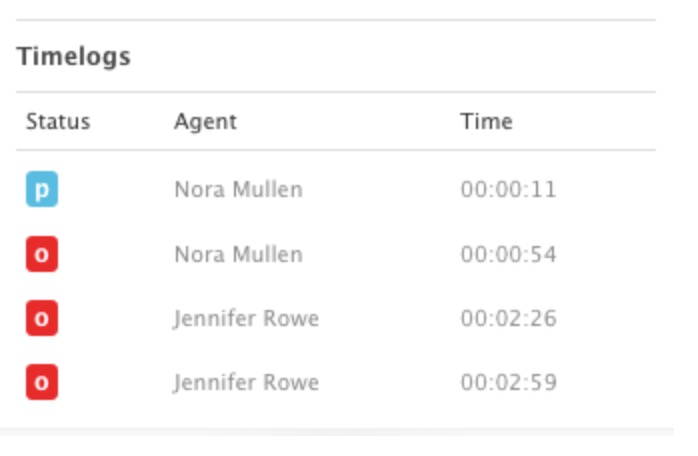
- Hide the app from agents who don’t have admin rights
- Add custom ticket fields to the ticket forms
- Automatically pause the time tracking when the agent switches to another tab and resumes when they come back to the ticket
- Make the refresh button visible to agents so they can restart their timer
- Enable agents to edit their time logs and see the ticket fields
- Select which roles can use the Time Tracking app
However, that isn’t all.
You can get custom time tracking reports with all your workers’ time data. This way, you get insights on where exactly your team experiences difficulties and delays. This way you can easily see where there’s room for improvement.
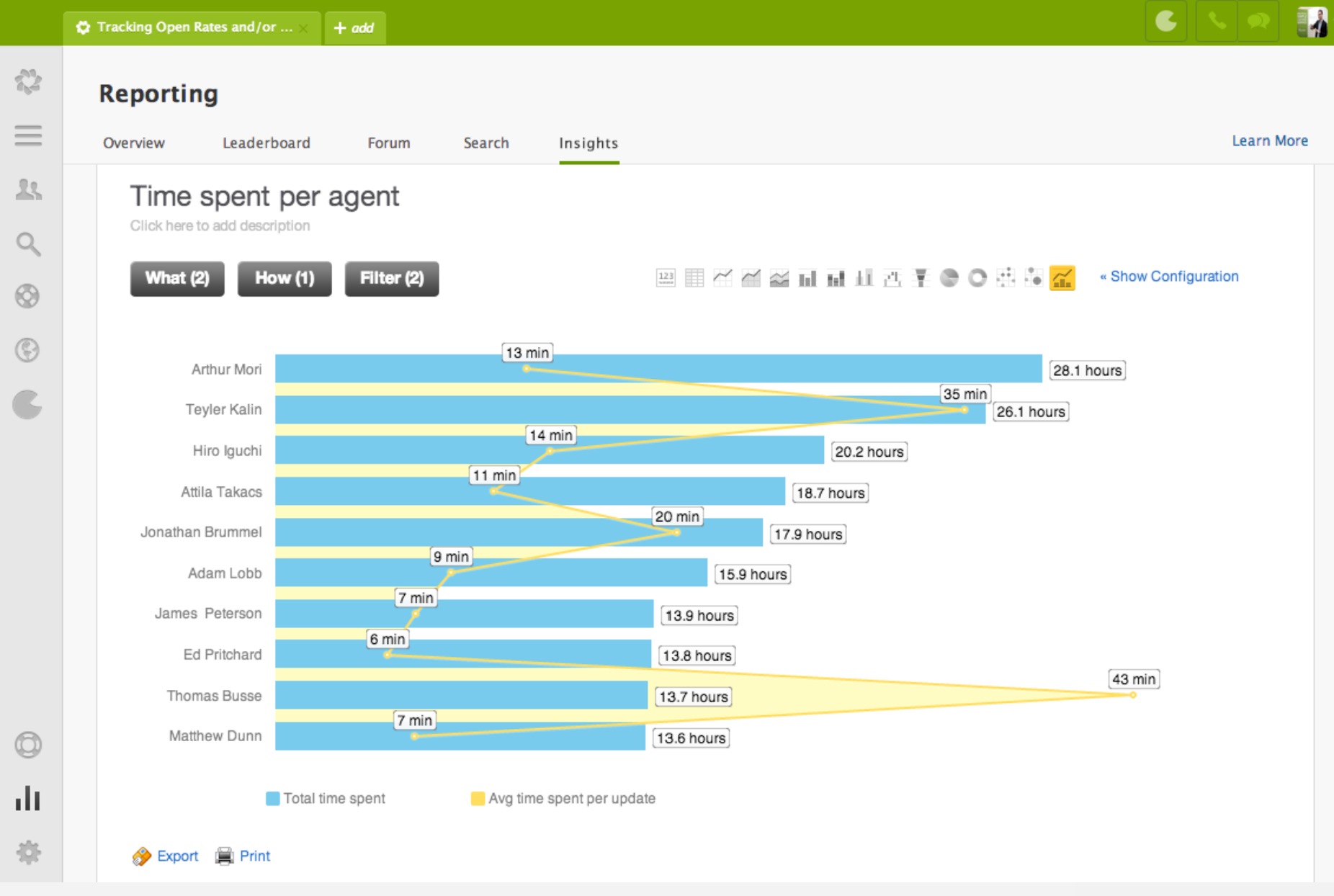
However Zendesk’s time tracking app isn’t perfect:
- You can’t clearly track time for multiple different projects and clients
- It has limited distraction management features to keep your agents focused
- There’s no inactivity tracking to ensure that they remain actively working on their tickets
These are all crucial features, especially when your customer service reps work remotely and aren’t in the same physical space as you.
So is there a way to track and monitor all of this?
Luckily, there’s a simple and effective solution that can help you: Time Doctor!
What’s Time Doctor?
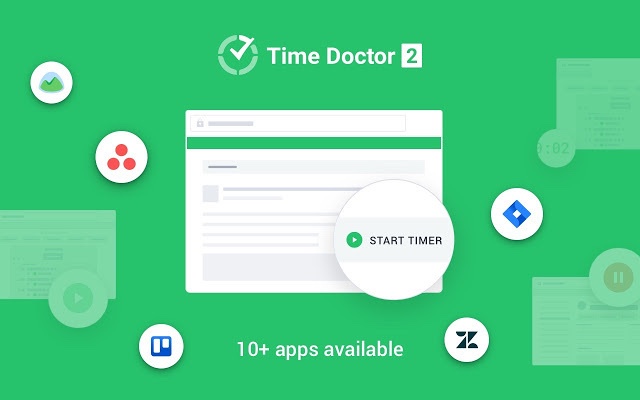
Time Doctor is a powerful productivity management app that’s available as a Chrome extension to easily track time in Zendesk. Time Doctor allows you to keep track of how much time your workers spend on each Zendesk ticket and much more!
Just choose a date range and Time Doctor will also show you:
- The total time spent on Zendesk tickets
- The time each employee spends on and off Zendesk tickets
- The task each of your employees is working on right now
- The websites and apps your employees use during work hours
- Their keyboard and mouse activity to analyze how active they are while working
- Screenshots of their screens taken at random intervals (optional feature)
Sounds great, right?
But that isn’t all.
Time Doctor is also super easy to set-up!
How to activate the Time Doctor Chrome extension:
1. To use the Chrome extension, make sure you’re using the interactive (not silent) version of the Time Doctor desktop app.
To do this, the Projects & Tasks feature must be enabled in Settings -> Company Settings.
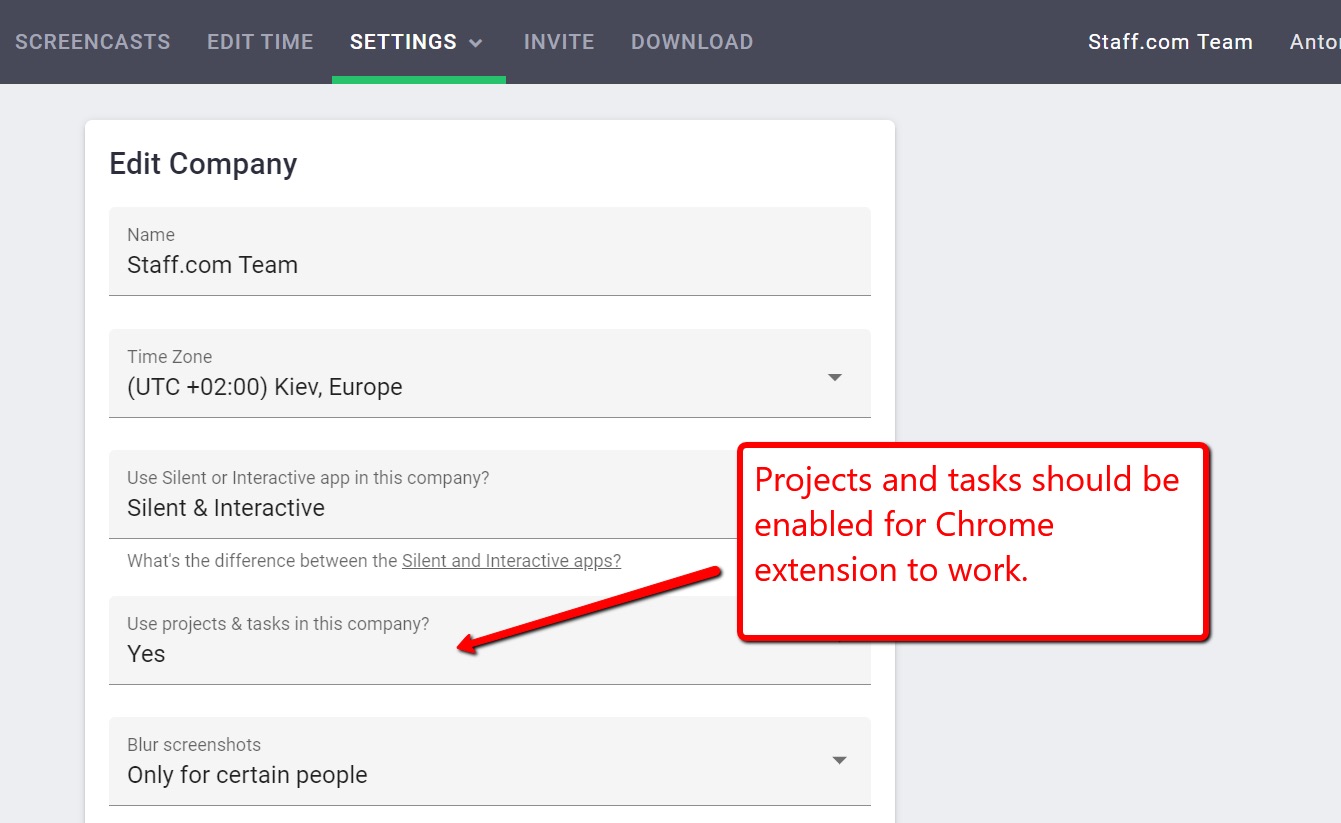
2. Activate the Chrome extension on the Integrations page.
To do this, log into your account, and click on Settings -> Integrations in the upper menu.
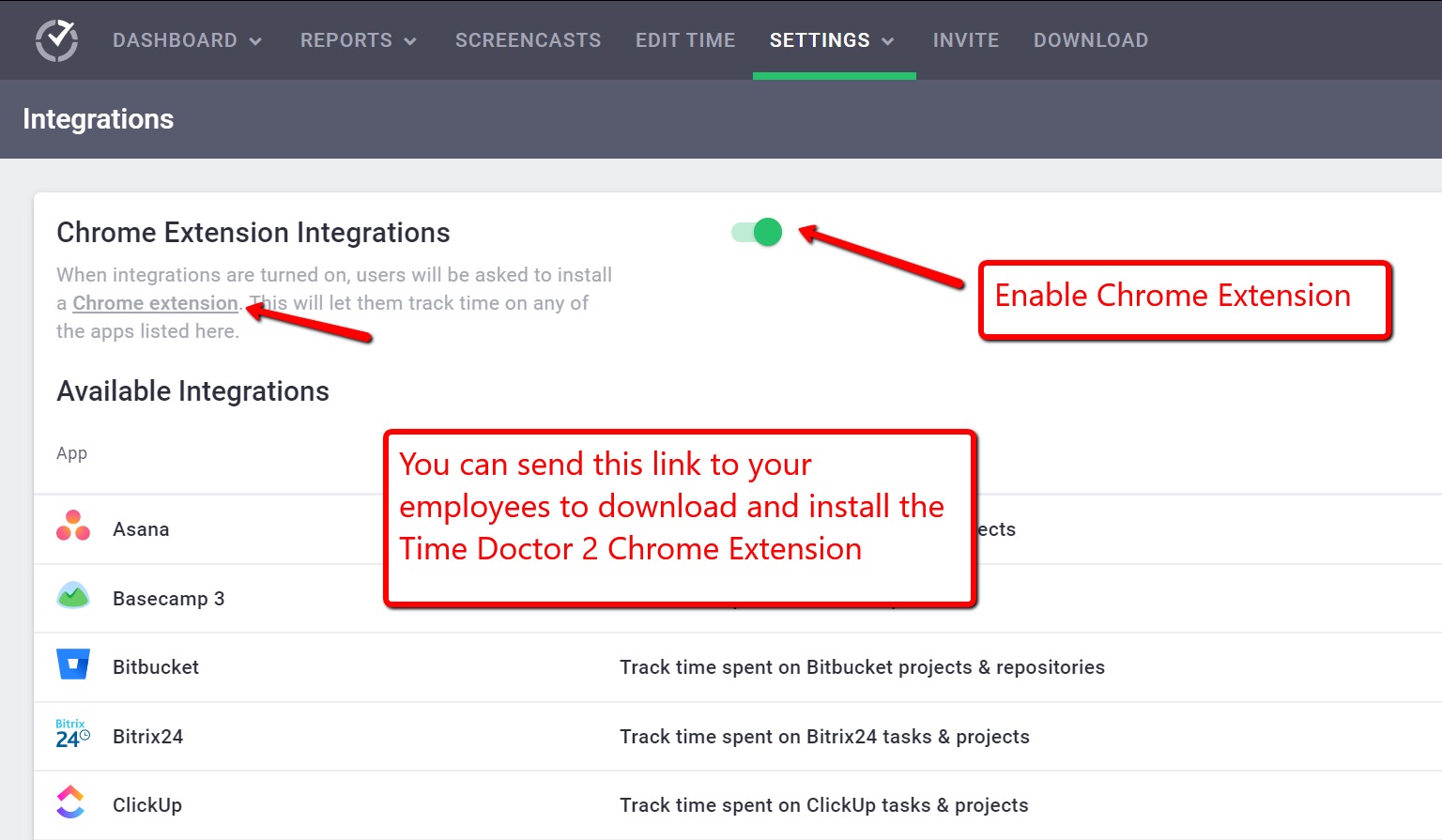
Once this has been enabled, your employees will receive a notification asking them to install the Chrome Extension.
They’ll now be able to track the time they spend on tasks and tickets in Zendesk!
How to use the Time Doctor Chrome extension in Zendesk:
- Once everything is set up, all you have to do is navigate to any of your Zendesk tickets or tasks.
- When the task is open, you’ll see a Start Timer button on the page.
- Click that button to start tracking time for that ticket. Once you’re done working on it, or need a break, just click Stop Timer.
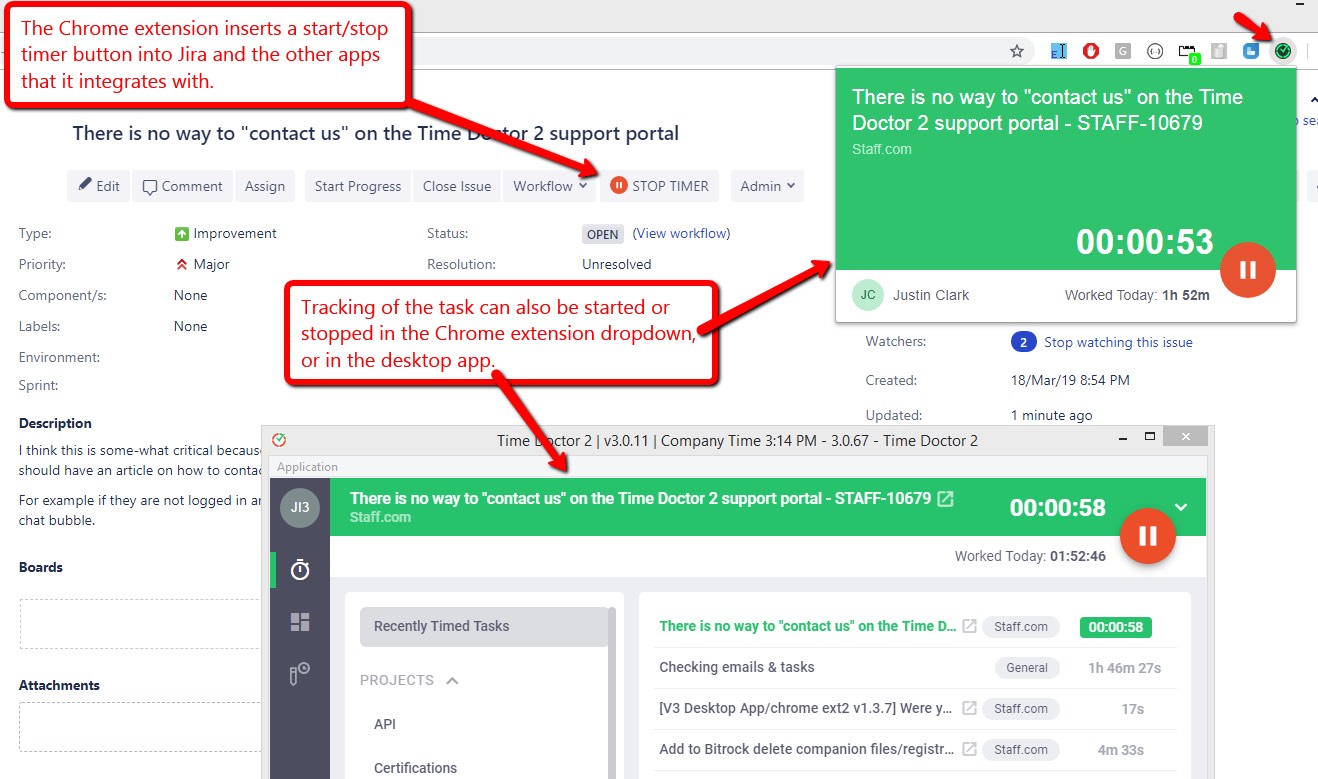
It’s that simple!
Additionally, whenever a task and project is created using your Chrome extension, it’ll be added to your desktop app also. This way, you don’t have to worry about losing track of all the time you spend on various Zendesk tickets!
And finally, whenever you need to take a look at an employee’s time data, just use one of the several reports/ timesheets that Time Doctor generates. It breaks down all the data over their work hours, giving you detailed insights over their productivity and work activity.
The top 6 other Zendesk features you should definitely try out
Here are 6 other great Zendesk features you should start using today:
#1. Live chat
A live chat feature embeds a chat box onto your website that invites your leads to reach out if they need any assistance or have questions for you.
And how does that help you?
The live chat feature will help you convert more of your website visitors into customers.
How?
Confused customers are 3 times more likely to make a positive buying decision when they’re provided with assistance. And what’s more convenient than a live chat box pop up which shows right when you need some help?
Another benefit of the Zendesk live chat feature is that you will increase your customers’ satisfaction and loyalty to the brand.
Need proof?
73% of the customers who use live chats are happy with the service and are more likely to return and make another purchase.
Additionally, live chats allow your customers to connect to your company’s representatives in a matter of seconds.
This is much better than having an automated bot response or even worse – having to wait on the phone line until a customer support representative is free to take the call!
#2. Social messaging
Zendesk’s live chat is great but you can use it only when potential leads come to your site.
If you want to take it a step forward you can use Zendesk’s social messaging add-on feature to reach out to your customers on different social messaging apps.
With 2.5 billion people using Twitter, WhatsApp, and Facebook Messenger nowadays, you will definitely get brownie points for showing up on their favorite messaging app to offer a quick, personalized response when needed.
This tool allows your agents to:
- Get new message notifications instantly on their Zendesk account, no matter which social messaging app your customers are using.
- Create an auto-response when a customer reaches out for help to notify them that a customer support representative will be with them shortly.
- Prompt your customers to send you a message on WhatsApp or Messenger with the “Message us” pop up button on your site or mobile app. This way, you’re only a click away when your customers need you.
#3. Self-support portal
Sure, helping customers is great, but what if they could help themselves?
A self-support portal does exactly that for your customers. The feature offers quick solutions to the most common and basic problems they’re facing – without having to involve a service agent.
Zendesk Guide is a Zendesk product that helps you build a self-support portal for your customer base.
This Zendesk integration will help you increase customer satisfaction by identifying the most common issues your customers experience. It then helps you create a knowledge base with the solutions to these issues to help customers help themselves.
Why is this so important?
73% of millennial customers prefer solving such minor issues on their own instead of having to seek the help of a customer support agent. Additionally, this frees up time for your support agents to focus on more complex tickets that need more attention.
Apart from the customizable knowledge base, the self-support portal has other cool features like:
- A help center that can be accessed at any time and anywhere.
- A customer portal where your customers can submit their help request, see its status, and get notifications on any changes in their knowledge base.
- Setting up community forums for customers to share their experience and exchange opinions on topics related to your product/service. It’s a great way for you to get some key insights on what your customers like and dislike about your company’s offerings.
#4. Customer relationship management
Zendesk is more than just a customer support system.
Zendesk also allows you to build reliable workflows to ensure the proper handling of each ticket. Your agents can use Zendesk to have a clear view of how many tickets are created, solved, worked on, or unassigned.
This way, you can track your real-time progress on the tickets – ensuring that nothing gets lost or mismanaged.
And if you want to have the full package and:
- perform more in-depth research about your customers
- build marketing campaigns
- turn your potential leads into active buyers
Zendesk’s got you covered!
The platform integrates with your favorite CRM tools like Hubspot to help you take action on all the customer information you’ve collected via Zendesk.
#5. Analytics
To improve your customers’ experience, you need to know as much as you can about their interactions with your website, support system, and products.
Luckily, Zendesk gives you all the data you need for this.
Zendesk can generate detailed reports for valuable customer insights. For example, you can create reports on:
- Ticket resolution performance
- Satisfaction ratings
- Call/chat experience ratings
Additionally, Zendesk supports reports over your employees’ performance as well. The system collects data on the number of tickets your agents are solving and their progress on each ticket.
You can also share these reports with them on a regular basis to help track and improve their own performance.
#6. IT help desk
So far, so good!
Your customers are assisted and taken care of when they run into trouble.
But what about your employees?
The people who resolve these problems can also face some technical issues, right?
That’s why Zendesk supports IT help desk that assists your employees when they experience difficulties along the way.
This way, your workers can reset their passwords, troubleshoot different problems, and get assistance with managing the ticketing system whenever they need it.
With the IT help desk you can also:
- Automate certain events, requests, and problems to optimize your workflows.
- Tag issues under different categories to streamline your efficiency in dealing with reported tickets.
- Implement an Information Technology Infrastructure Library (ITIL) when different IT incidents happen. This way, you can restore the normal operations of your customer support activities in no time.
Wrapping Up
Zendesk is an end-to-end solution when it comes to customer support. You get a convenient time tracking system, live chat functionality, customized reports and more – all built into one simple system.
But to truly benefit from Zendesk, remember to integrate it with powerful performance management and customer relationship management apps.
Once you do, you’ll have a fully-fledged productivity powerhouse on your hands and can deal with customers with ease!


